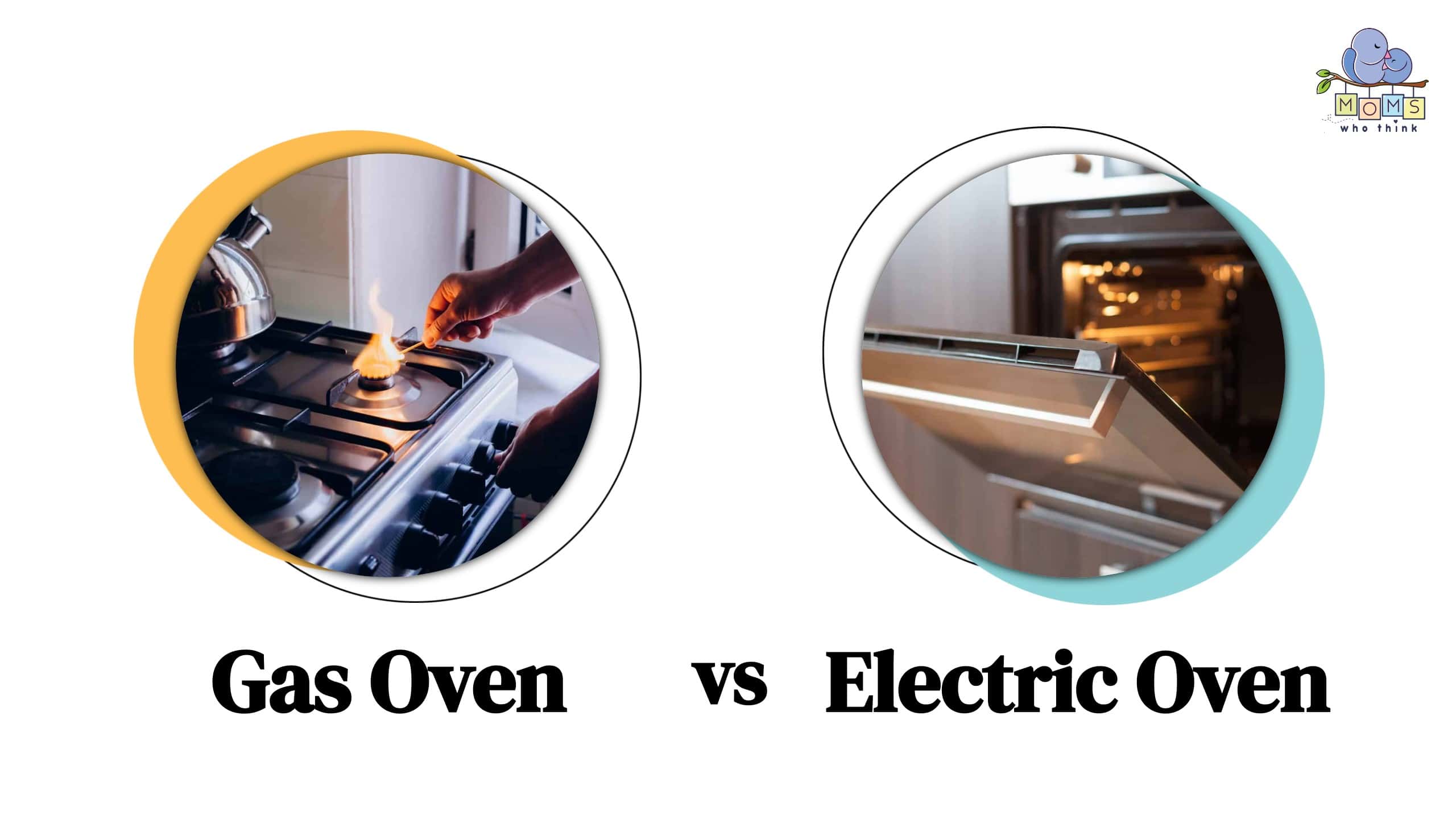You might have seen gas stoves in the news the past few months. This is because early in 2023, the US Consumer Product Safety Commission was considering a ban on gas stoves. No such ban has been passed as of the publication of this article. But it brings up the point: what are the pros and cons of a gas stove? When it comes to gas ovens vs. electric ovens, which is better to cook with? Which one is less dangerous? Find out below.
How Does a Gas Oven Work?
Gas ovens predate electric ovens. In the olden days, ovens were mainly fueled by coal and wood. It wasn’t an efficient way of cooking. The heating wasn’t even and you would really have to monitor your meal to make sure the flames didn’t jump or the water didn’t boil over.
Gas ovens were invented in the early 1800s but didn’t become widely used until the early 1900s. They rely on gas pipelines which were expensive to build in the early twentieth century. They were really only available to more affluent households.
As they became more widely available, more households began to acquire gas ovens. They were preferable to earlier cooking methods because you could adjust the flame. But the gas ovens of yore were a little different than our gas ovens today. You had to ignite the burner with a match, which could lead to injury. If you turn on the oven without igniting the gas, it could also lead to an explosion.
The next improvement to gas ovens was pilot lights, which are small, continuously burning flames. When you turn the oven on, natural gas is released through a small tube. It is then ignited by the pilot light. The rub is that this method of ignition is pretty wasteful as gas will continuously flow through the pilot light. If the pilot light goes out, there is usually a safety measure that will cut off the gas flow so that the room and/or oven doesn’t build up gas.
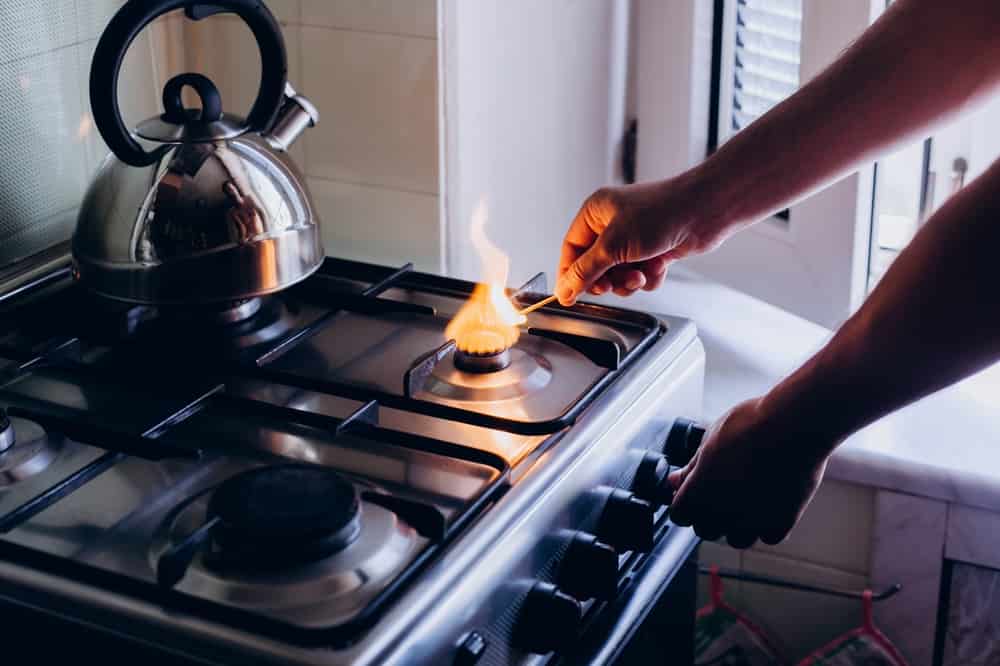
©Krasnikova Kat/Shutterstock.com
More modern ovens have electric ignition. For this, you turn the oven on and a spark ignites the natural gas flowing to the oven.
How Does an Electric Oven Work?
An electric oven is actually not all that different from a gas oven except for the source of its fuel. Electric ovens use – you guessed it – electricity as opposed to natural gas. Instead of natural gas being released to heat up the parts of the oven, electricity is released to heat up the coiled parts of the electric oven. Both gas and electric ovens rely on internal thermostats connected to an electric control board at the top of the oven, where you put in cooking time and temperature.
Electric ovens are far more affordable than gas ovens because they are far more accessible. Nearly every house runs on electricity, whereas fewer and fewer houses have access to a natural gas line that can fuel a gas oven. If you’re shopping around for houses today, new builds or recent renovations will likely have electric ovens. Older homes will typically have gas ranges.
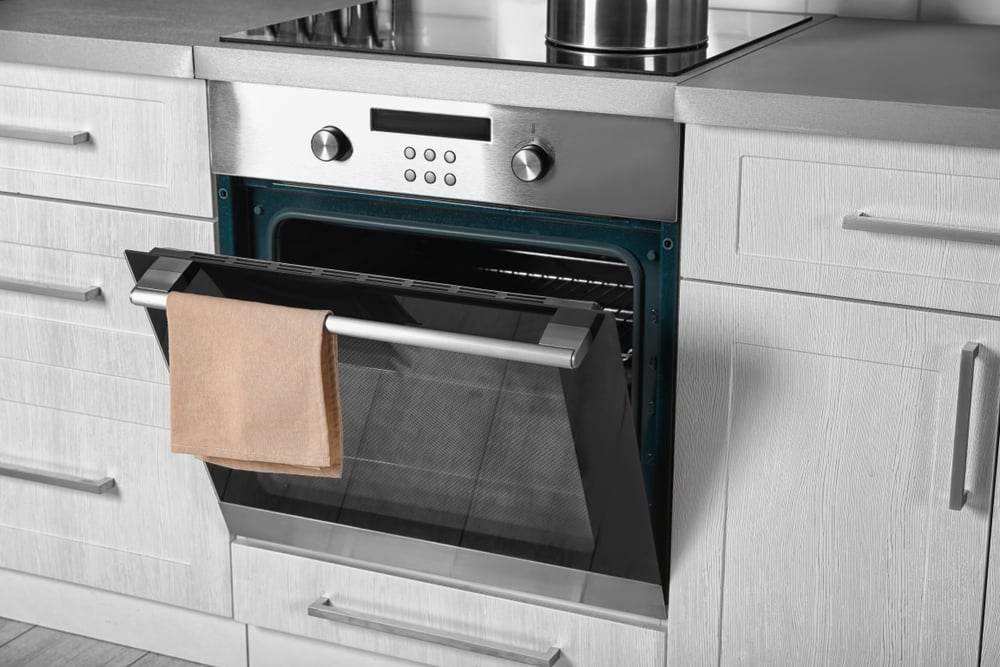
©Africa Studio/Shutterstock.com
Gas Oven vs. Electric Oven: Which is Better to Cook With?
If you’re a casual home chef, you probably won’t notice the difference between cooking with a gas oven vs. an electric oven. But for those who really consider cooking an art form, the preferred appliance is a gas oven, mainly because of the stovetop.
On an electric stovetop, instead of burners, you have coils. Electricity heats up these coils in order to cook your food. It can sometimes take a while for the coils to get up to the proper temperature and it also takes much longer for them to cool once you’re done cooking. If you’re making something that requires you to modulate temperature from boiling to simmering to just barely heated, it’s difficult to manage the temperature on an electric stovetop.
Gas stovetops are much easier to manage in terms of temperature. Since it’s a flame coming up from your burners, you can observe as you raise or lower the heat and don’t have to worry about if your coils are retaining more heat than you want, like you would with an electric stove.
This is why chefs prefer gas stoves because they have more control over how their food gets cooked. If you’re mainly using your stove to boil water for pasta or scramble eggs or something else relatively simple, an electric oven is really all you need.
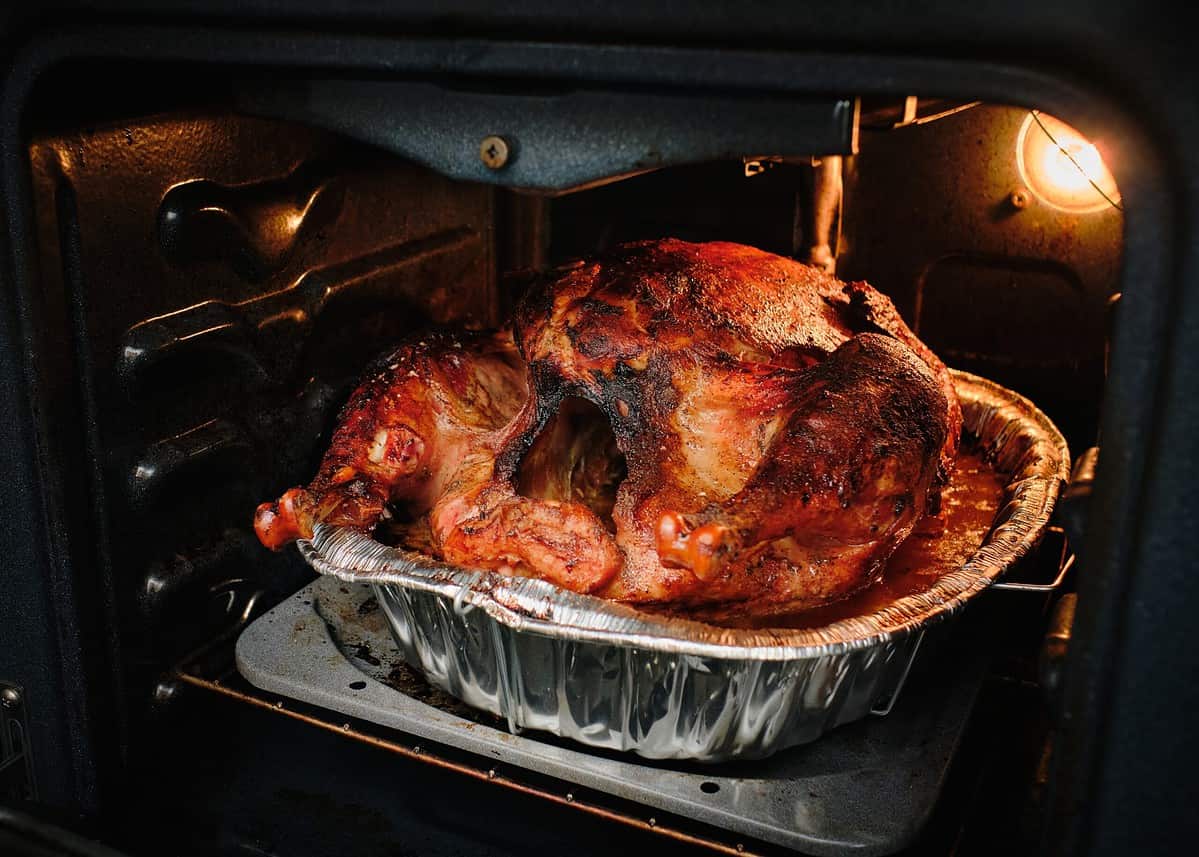
©klarion/Shutterstock.com
Gas Oven vs. Electric Oven: Which is More Dangerous?
A gas oven is definitely more dangerous than an electric oven, for two main reasons. The first is that it can lead to explosions or kitchen fires way more easily. While there have been various safety measures implemented into the modern versions of gas ovens, you’re still relying on natural gas to provide the heating to your appliance. Cooking over an open flame means you run the risk of catching clothing, nearby towels, or even occasionally body hair on fire. If you nudged the burners on by accident, you also run the risk of having your home fill up with natural gas. If anything sparks or if someone goes to light a candle, it would cause an explosion.
The second reason gas ovens are more dangerous is that natural gas is not healthy to inhale in large amounts. While small amounts emitted from your oven are not dangerous, if the appliance malfunctions and you have a build-up of gas in your home, it can pose health risks. These include headache, decreased vision, fatigue, shortness of breath, and loss of consciousness. You likely will never have to worry about a gas leak from your oven since there are so many safety measures in place. However, there’s always a possibility with gas ovens, whereas it’s not with electric ovens.
Gas Oven vs. Electric Oven: Can You Replace One with the Other?
Technically, if you have access to natural gas, you can install a gas oven, even if you’re currently set up for an electric oven. However, you’ll want to have a technician do it for you because you may not have a gas line set up in your house. It requires technical expertise to set one up.
If you have a gas oven and want to replace it with an electric oven, you may also want to consult a technician, just to ensure you don’t have a gas leak while you’re unhooking your gas oven. However, you shouldn’t have any issues hooking up your electric oven, as long as you have electricity.
If a Ban on Gas Ovens Passes, What Happens Next?
If you currently have a gas oven in your house, you’re not going to have to surrender it, even if a ban on gas ovens passes. The ban will most likely only apply to newly made appliances.
However, you may find that there are fewer and fewer houses that will actually have a gas-burning stove. Even in newly renovated houses that are connected to gas lines, if flippers are looking to provide new appliances and the ban has passed, they will probably only be able to purchase electric ovens.
Because of this, gas ovens might increase in value, since the supply will likely decrease in the future.
Which Should You Buy?
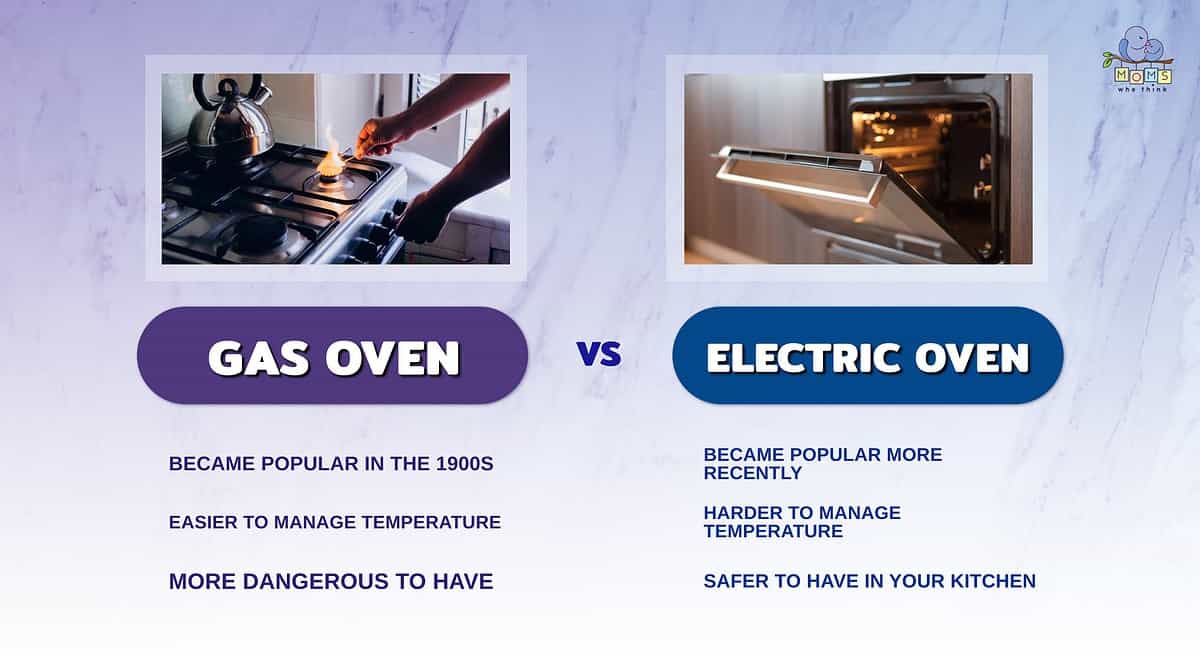
- Gas ovens have been around for a lot longer than electric ovens. Although gas ovens came around in the 19th century, they didn't become popular until the 1900s.
- Professional chefs generally prefer gas ovens, since it's easier to manage the temperature of their stovetops.
- A gas oven is more dangerous to have. There is a greater fire risk, and there's a risk of gas buildup in your home if the appliance malfunctions. If you have a gas oven, it's a good idea to have a functioning carbon monoxide detector nearby.
Your decision might be out of your hands if you don’t have access to natural gas. In that scenario, you’d only be able to buy an electric oven.
But if you do have natural gas access and you’re deciding between a gas or electric oven, there are two main factors you should consider in your decision. The first is what kind of cook you are or hope to be. Gas ovens are definitely the preferred cooking appliance for those who are looking for more control and finesse with their food.
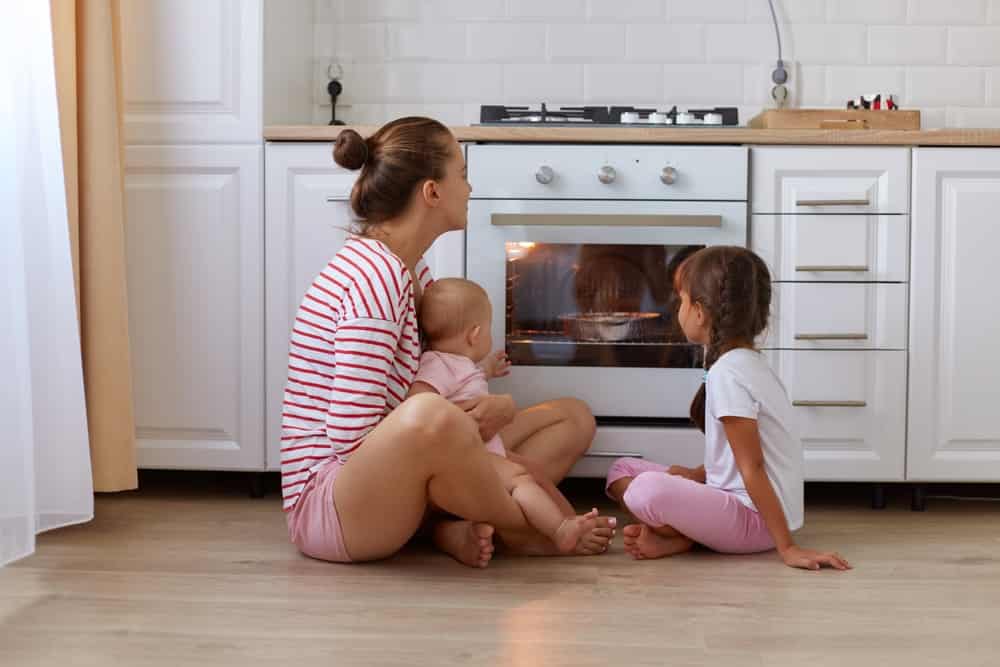
©StoryTime Studio/Shutterstock.com
The second factor is safety. If you’re someone who is sometimes careless in the kitchen, or just doing several things at once, you might be better off with an electric oven. There’s less chance of you reaching over to stir something and accidentally catching your sleeve on fire!
Print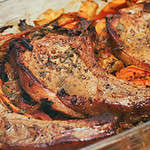
Oven Baked Pork Chops
- Yield: 2 entrées, each entrée serves 4 1x
Ingredients
- 8 boneless pork loin chops (about 3 1/2 pounds)
- Salt and pepper to taste
- 2/3 cup Dijon mustard
- 2 tablespoons Worcestershire sauce
- 1 1/3 cup Italian breadcrumbs
Supplies needed:
- 1 gallon freezer bag, labeled
Instructions
- Season the pork chops with salt and pepper.
- In a small bowl, mix together the Dijon and Worcestershire sauce.
- Dip each pork chop in the mustard mixture to cover and coat heavily with breadcrumbs.
- Preheat the oven to broil. Cover a baking sheet with foil and lay a baking rack on top. Lay 4 of the coated pork chops on the baking rack and broil for 5 to 7 minutes on each side or until done.
To freeze extra chops:
Do not bake before freezing. After breading pork chops, wrap individually, label, and freeze for up to 2 months.
Label:
Remove from freezer to defrost or place on rack directly from the freezer. Preheat the oven to broil. Cover a baking sheet with foil and lay a baking rack on top. Lay the coated pork chops on the baking rack and broil for 8 to 12 minutes on each side or until done.
Nutrition
- Calories: 302
- Sodium: 797mg
- Fat: 10g
- Carbohydrates: 18g
- Fiber: 2g
- Protein: 34g
- Cholesterol: 81mg
